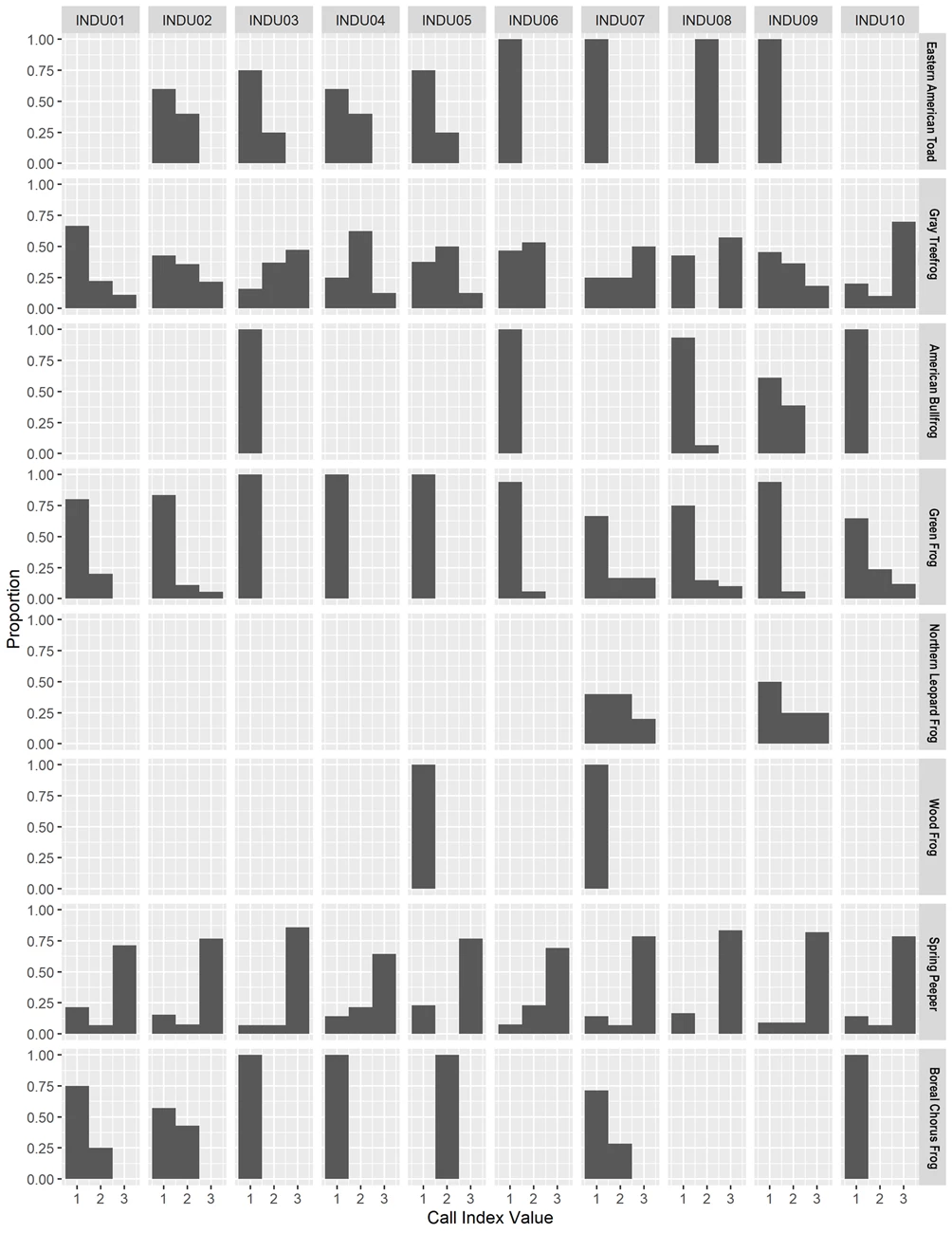Last updated: January 10, 2024
Article
Amphibian Monitoring at Indiana Dunes, 2019

Gary Casper
Toads and frogs are unique among amphibians in that they produce calls that are unique and identifiable. This makes it possible to monitor their populations using remote recorders, or “frog loggers.” Monitoring is important for many reasons, the top one being that declines of amphibian populations are one of the most prominent conservation issues in the world. Most amphibians need both land and water during their lifetimes, so they are sensitive to environmental changes including temperature, precipitation, and humidity, making them indicators of climate and habitat change.

NPS photo
Frog Loggers
Ten permanent amphibian monitoring sites were established in 2013. In April, an audio recorder at each site begins collecting 5-minute samples once an hour between 5:00 p.m. and 3:00 a.m. each day. Four extra samples are collected on the half-hour mark in the evenings between 7:30 and 10:30 p.m. A temperature sensor records temperature once an hour.
Recording frog and toad calls allows us to determine occupancy and abundance. Occupancy is a measure of whether or not a site is occupied by a species. Abundance is tracked by assessing how the maximum call intensity changes on sites across years, and by how many times we hear that species across years. In 2018, we also began tracking phenology, or the trends in annual first-calling dates for each species over time. For now, we are only tracking phenology for three species common to all parks in the network: Eastern American Toads, Green Frogs, and treefrogs. The Gray Treefrog and Cope’s Gray Treefrog have very similar calls that are difficult to distinguish, even with recordings, so for phenology purposes, data for both species are combined at parks where both occur.
A sub-sample of the recordings are used to assign a Call Index Value (CIV) for each species. CIV is the maximum call intensity, ranging from CIV=1 (non-overlapping calls indicating few singing males) to CIV= 3 (calls too numerous to count individuals). CIVs can be analyzed over time to determine if a species is increasing or decreasing in abundance.
The Latest (as of 2019)
Eight of the nine frog and toad species known to occur at INDU were recorded in 2019, with Eastern American Toad, Gray Treefrog, Green Frog, and Spring Peeper occurring at every site sampled. Boreal Chorus Frog was found at all but one site.
Phenology
Frogs begin calling earlier at INDU than at any of the other network parks. The Eastern American Toad began calling at three sites in mid-April and the rest of the sites a few days later, when the first treefrogs began calling. Treefrog calling commenced in three waves, first around 20 April at three sites, then around 4–6 May at three other sites, and finally on 16 and 21 May at the last two sites. Green Frog calling began on 15 May, with all sites recording Green Frogs by 22 May.
Call Index Values
More than half of the recordings of Spring Peepers from all sites scored CIV=3, while American Toads scored CIV=1 in all recordings at four sites and in more than 50% of recordings at the other four sites where they were heard.

What's Next?
The automated recorders continue to turn on each spring and capture the sounds of frogs and toads coming out of their winter slumber and looking for mates. Data collected since 2019 are being analyzed and we will publish regular updates on the status of amphibians at Indiana Dunes.
